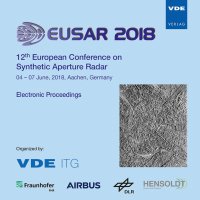Challenges for Next Generation SAR
Conference: EUSAR 2018 - 12th European Conference on Synthetic Aperture Radar
06/04/2018 - 06/07/2018 at Aachen, Germany
Proceedings: EUSAR 2018
Pages: 4Language: englishTyp: PDF
Personal VDE Members are entitled to a 10% discount on this title
Authors:
Seguin, Guy (INSARSAT, Canada)
Geudtner, Dirk (ESA, The Netherlands)
Abstract:
Since 2003 Synthetic Aperture Radar (SAR) mission development has grown quasi-exponentially. The market for high-resolution SAR data is forecasted to grow significantly over the next decade. The novelty is that besides space agencies, now also commercial entities have taken the initiative to develop and operate SAR missions focusing on commercial applications There are currently several initiatives to launch small or micro-satellite SARs, which may represent a disruptive low cost alternative approach to large, complex and expensive SAR satellites. In this context, SAR mission developer are facing several challenges, such as the demand for multi-frequency bands and full polarization, for improved spatial resolution and ground coverage, fast revisit observations and short orbit repeat cycle intervals for SAR interferometry. Other challenging issues are; the capability to provide routinely and systematically SAR acquisitions with high data quality to ensure data continuity for operational applications, as well as the implementation of novel types of measurements techniques, such as Ground Moving Target Indication (GMTI) and Along Track Interferometry (ATI) in support of evolving applications, such measuring the velocity of vessels and ocean currents. Thus, there is a decision to be taken regarding developing either large satellites or small satellites to be flown in constellations or even in swarms. This paper provides an overview and addresses the above-mentioned challenges, considering the environmental context and the reasons for the fast development of SAR missions. It serves as an introduction to the other papers in the session.


